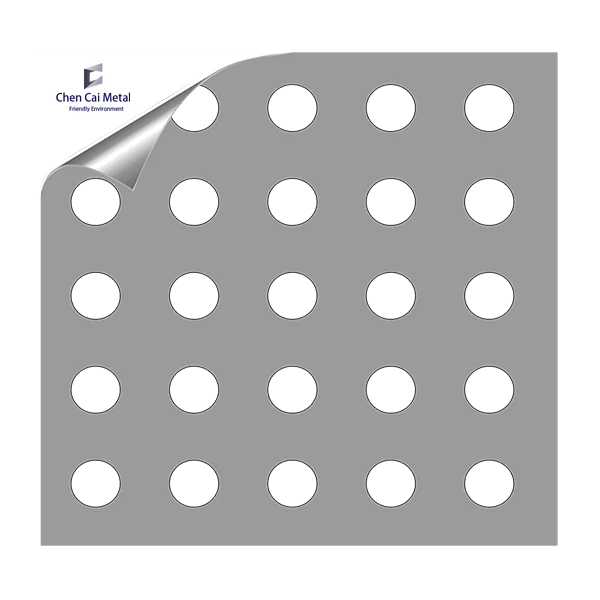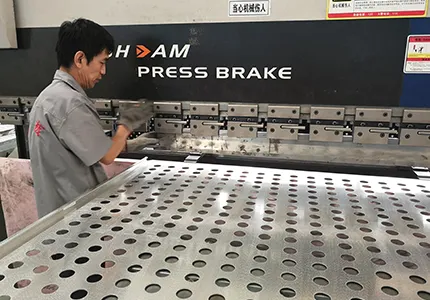
(eml expanded metal lath)
EML expanded metal lath has become an essential component in modern architectural and industrial projects, recognized for its durability, versatility, and cost-effectiveness. This meticulously fabricated material is produced by slitting and stretching sheets of metal into a mesh pattern, providing unparalleled reinforcement and a superior mechanical bond for plaster, stucco, and renders. The versatility of eml expanded metal lath
is highlighted by its broad adoption in infrastructure, commercial, and residential constructions across multiple continents. Major market reports indicate that the global market for expanded metal lath surpassed US$375 million in 2023, with a CAGR of 5.8% projected for the period 2024-2029. Besides its core application, advanced variants like eml metal mesh and eml stainless steel mesh are gaining prominence due to their enhanced resistance to corrosion and adaptability in highly demanding environments.
The technological edge of EML solutions lies in the intricate expansion pattern achieved without any welds or weak points, ensuring seamless structural cohesion. With a standard thickness range from 0.4mm to 1.5mm and mesh sizes varying between 10x30mm and 25x60mm, EML metal mesh provides unrivaled mechanical interlock with concrete and cementitious coatings. For facade and ceiling reinforcement, the mesh maintains a form factor that easily conforms to contours and eliminates premature cracking, leading to a measured increase in plastered surface durability by up to 35% compared to conventional wire lath. Furthermore, EML stainless steel mesh variants extend service life to well over 50 years in saline or chemically aggressive environments, according to ASTM B117 salt-spray test results. Lightweight yet robust, EML products contribute to project efficiency by reducing installation time by up to 30%.
Distinctions between EML providers are evident in their product line diversity, material quality, and market presence. The table below compares some of the industry’s frontrunners:
| Manufacturer | Core Offerings | Mesh Thickness (mm) | Main Materials | Annual Output (Tons) | Certifications |
|---|---|---|---|---|---|
| ExpanTech Global | EML Metal Mesh, EML Stainless Steel Mesh | 0.5 - 1.5 | Galvanized Steel, SS304/316 | 48,000 | ISO 9001, ASTM C847 |
| Metallath Solutions | Standard/Heavy-Duty Expanded Lath | 0.4 - 1.2 | Mild, Galvanized Steel | 30,500 | EN 13658 |
| SteelMesh Industries | Custom EML Mesh, Perforated Mesh | 0.5 - 1.0 | Galvanized, Stainless, Aluminum | 20,800 | ISO 14001, ASTM C1063 |
| LathMaster Inc. | Expanded Metal Lath, Mesh Panels | 0.7 - 1.5 | Pre-Galvanized, Hot-Dip Galvanized Steel | 36,700 | ISO 9001:2015 |
The above data exemplifies the competitive landscape, where product innovation, certification compliance, and specialization in alloys such as SS316 greatly influence purchasing decisions.
Customization lies at the heart of today’s construction challenges. EML suppliers have responded with a vast array of tailored products to address unique project needs, including custom mesh dimensions, specific coating requirements (e.g., epoxy, powder coatings for extreme weather), and material blends (such as combining stainless steel for surface layers and galvanized steel for inner layers). For instance, metro projects in coastal cities frequently demand EML stainless steel mesh with a dual-layered zinc and polymer coat, extending corrosion resistance by 85% over base models. Industry surveys highlight that 62% of general contractors in 2023 preferred pre-cut, project-specific mesh panels to optimize labor costs. Furthermore, digital design files allow offsite fabrication to match complex architectural profiles, minimizing onsite adjustment and wastage rates below 4%. Such innovations empower stakeholders to align technical, aesthetic, and budgetary objectives.
The versatility of EML expanded metal lath is best illustrated through practical deployment. In a recent 160,000-square-meter stadium project in Dubai, EML metal mesh panels reduced plastering labor requirements by 27% and slashed surface crack incidence by half during the critical first three years. Similarly, for the North Sea offshore platform, the installation of EML stainless steel mesh achieved zero mesh failure over a seven-year inspection cycle, despite saline spray and subfreezing temperatures. In cultural heritage restoration, lightweight EML products facilitated the re-rendering of vaulted ceilings without putting stress on original wooden frameworks, safeguards substantiated by finite element analysis simulations. Beyond construction, ongoing airport infrastructure upgrades have adopted composite EML mesh for blast-resistant barriers, underscoring the material’s role in high-performance engineering.
Recent data showcases a pronounced shift toward environmentally sustainable and high-strength mesh solutions. The demand for EML products with recycled content has increased by nearly 23% year-over-year in North America, as institutions like LEED and BREEAM incentivize low-carbon construction inputs. Standard mesh dimensions are trending toward finer aperture sizes (6x25mm to 16x40mm) for enhanced fireproofing and acoustic reduction, particularly in data centers and high-rises. The future holds promise for nano-coated EML variants, which early testing indicates can triple corrosion resistance compared to standard galvanized EML. Manufacturers are also leveraging smart manufacturing, using IoT-enabled presses to ensure batch-to-batch consistency at scales exceeding 50,000 tons annually. This drive toward higher precision and eco-innovation is set to redefine sector benchmarks, with strategic penetration in Latin America and Southeast Asia facilitating 6.5% annual growth through 2029.
In summary, EML expanded metal lath stands as a cornerstone material, vital for the resilience and efficiency of contemporary projects. Its rapid evolution, underpinned by robust technical properties and tailored engineering, continues to set industry standards. The flexibility in customization, strong global competition, and proven application success across a spectrum from heritage restorations to cutting-edge infrastructure underline its indispensable value. Market forecasts and project data reinforce the impression that eml expanded metal lath, together with advanced derivatives like eml stainless steel mesh, will remain fundamental to building excellence and future-ready architecture for decades to come.

(eml expanded metal lath)
PREV:
This is the last article